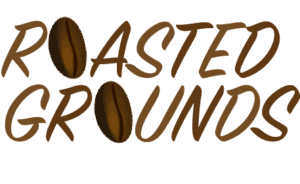You know that coffee beans from different parts of the world can taste different. Different roast levels also taste different. Maybe you’ve even seen coffee cupping notes about beans with descriptions like “intense cup flavor,” “notes of orange marmalade,” “molasses cookie,” and “oily mouthfeel.” Then you take a sip and all you taste is – coffee. It can make coffee cupping seem intimidating.
Don’t be intimidated. Coffee cupping is just the fancy term for coffee tasting. Cupping is done at every step of the coffee bean buying process – by the farmers, the wholesale buyers, the exporters, and the roasters. This process is highly ritualized and, in many ways, different from just drinking a cup of joe. But you can learn how to do it and it will broaden your coffee horizon as you get more into roasting your own beans.
Why Do A Coffee Cupping?
Cupping coffee will give you a better appreciation for the subtle flavors and aromas of coffee beans. It will help you to evaluate coffee beans from around the world to find the ones you like. Cupping is useful if you plan to create blends from your roasts as well. It’s also a great way to introduce friends and family to the hobby of coffee roasting. After you’ve done it a few times to get the hang of it, invite others over to your house for a cupping session.
Coffee cupping is subjective and each individual’s experience with each cup will be different. If you’re trying to evaluate several beans against each other, a blind cupping is best way to ensure fairness. To do this, assign each sample a random number or letter (A, B, C, etc.) Create a reference key and ask a friend or partner to keep the reference key so you don’t bring pre-judgment or expectations into the cupping.
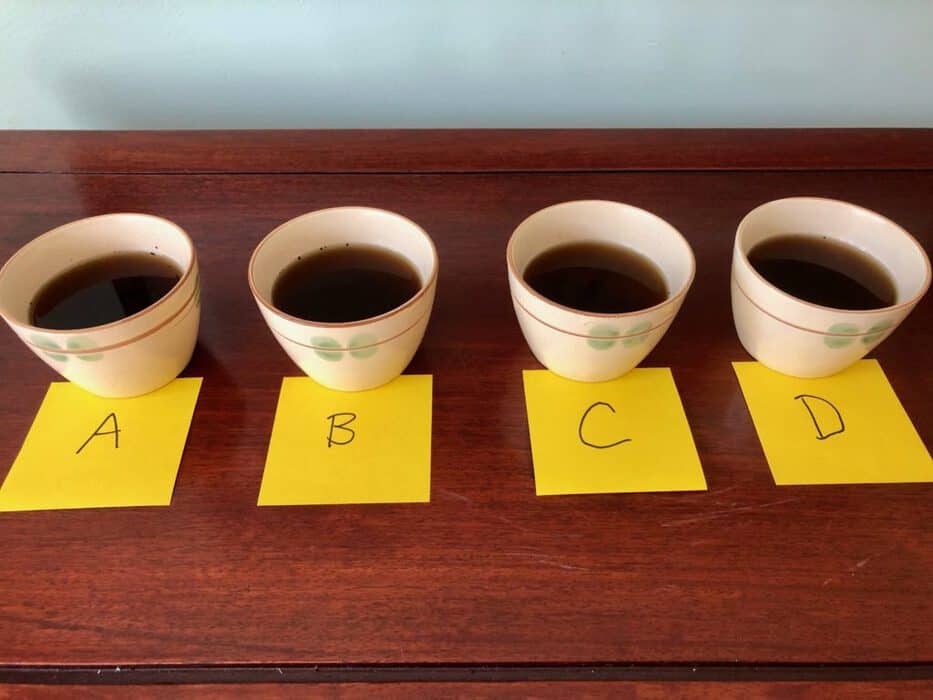
Coffee cupping is highly dependent on aromas as well, so don’t wear cologne or perfume. Don’t have other food or odors around. All of these smells can influence your perception of the coffee.
Materials Needed
- Coffee. Coffee should be cinnamon roast, or just after first crack. This preserves varietals. Use 10 grams medium or coarse grind per 6 oz of water. A burr grinder is best, but watch out for cross contamination. If you’re using a blade grinder, aim for consistent times to ensure consistency across grinds.
- Near boiling water
- Shallow, wide-mouthed cups (6-8 ounces)
- Clean soup spoons
- Glass of warm water for rinsing spoons
- Scale to weight coffee
- tasting sheet and pencils for note taking
- trays or saucers for ground coffee
The Process of Preparing Cupping Samples
- Heat water.
- Grind the beans. Use a coarse grind and aim for consistency across samples. Be sure to avoid cross-contamination.
- Smell the ground coffee and take note of the fragrances you find.
- Once the water is hot, place the grounds into tasting cups. Add 6-8 ounces of water and let it sit for 4-5 minutes. The grounds will form a crust. As the coffee steeps, place your spoon in the warm rinse water. This helps avoid a cold spoon dropping the temperature of the coffee when you dunk it in.
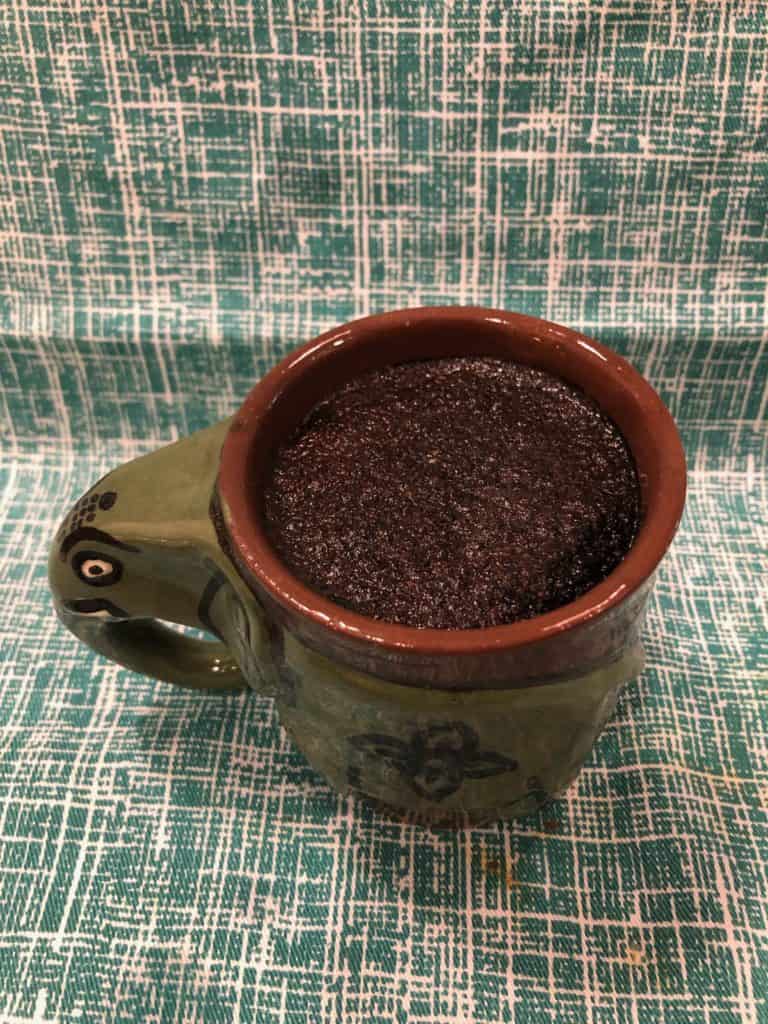
Break the Crust
Before you break the crust, get your nose right up to the edge of the cup. Using the back of a spoon, slowly push the crust to the back of the cup and down to the bottom. As you do this, smell the aromas released from the coffee and take notes on your paper. Not all of the grounds will sink to the bottom, so you’ll have to scoop out the remains floating on the surface.
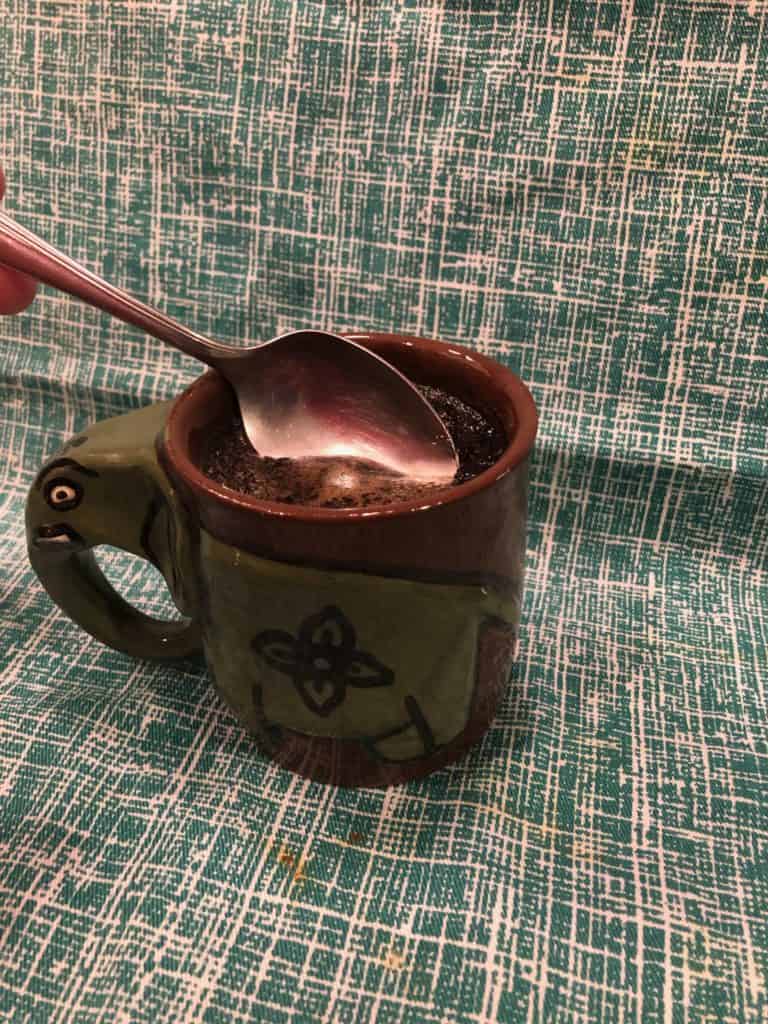
Aromas and Tastes of Coffee
Coffee flavors can be extremely complex and our tasting experiences often trigger memories which add further complexity. Below are some of the different aromas and tastes you may experience. This is by no means a comprehensive list, but it gives you an idea.
- Floral. Often sweet flowers such as rose, jasmine, honeysuckle or chamomile.
- Fruits. Due to the high acidity of cinnamon roasts, notes of citrus fruits or berries are common. Examples include strawberry, pineapple, grapefruit, and cherry.
- Grasses. Coffee can smell/taste like hay, grass, or herbs like tarragon or basil.
- Spices. Usually sweet spices, like cardamom or cloves. Sometime black pepper or anise.
- Chocolate
- Nuts. Frequently, coffee tasters note the smell of almonds, peanuts, or hazelnuts.
- Other. Coffee might also have notes of wood, tobacco, damp soil, rubber, or medicinal smells.
The Specialty Coffee Association of America has a flavor wheel you can use for reference as you are tasting. You can find it at this link.
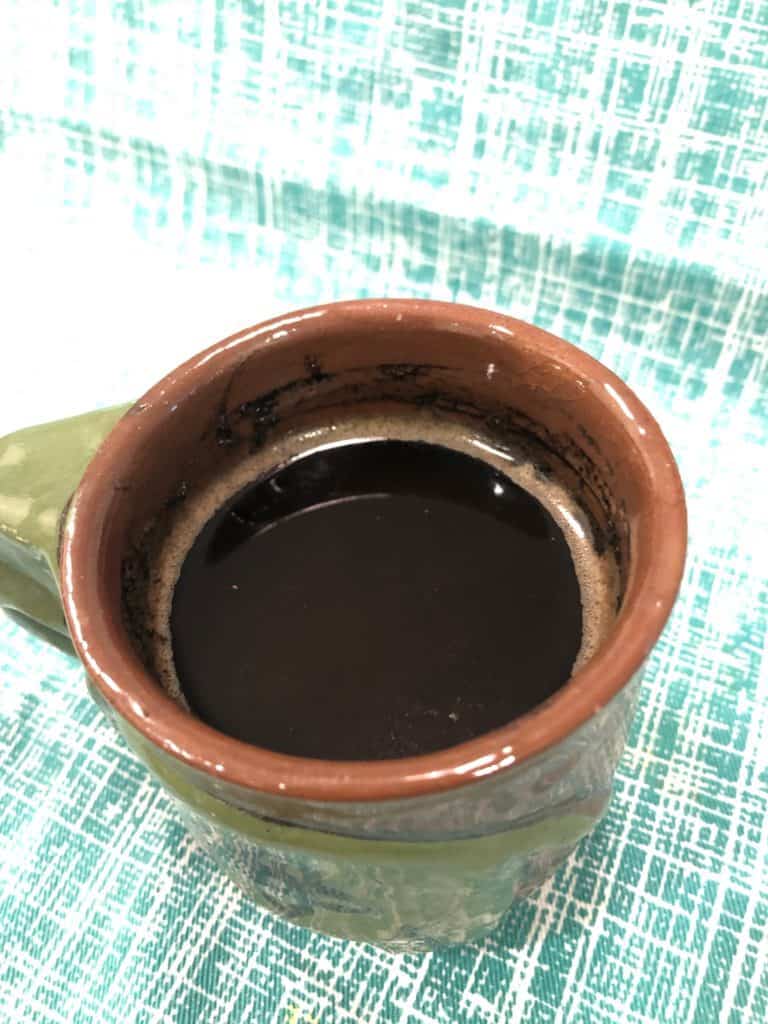
Taste
Now the moment you’ve been waiting for. Remember, the coffee is very hot. With that in mind, carefully slurp some into your mouth. The slurping sound is not rude in this case. It helps to bring air into your mouth with the coffee, which will help with the scents of the coffee. Your sense of taste is closely connected to your sense of smell. It also helps to distribute the coffee all around your mouth.
Swish the coffee across your tongue so you can engage the coffee with all of your taste buds. Think about how it feels in your mouth. Is it watery or thick?
Professional coffee tasters spit out the coffee at this point. If you’re tasting many samples in a cupping, this helps to prevent being overcaffeinated. If you’re uncomfortable doing that, just swallow it. Either way, now you can turn your focus to the finish.
The Finish
The finish is how the coffee feel and taste lingers on your tongue. Does it tingle? Does it feel heavy? Do the aromas change?
After you finish making your notes from this cup, you simply repeat the steps with other cups until you’ve finished the cupping. It’s also interesting to resample the cup after it has cooled down a little. You may find the tastes change once the coffee is lukewarm. Below is a chart you can use to record your impressions. For a free printable PDF of this chart, click here.
| FRAGRANCE | AROMA BREAK | ACIDITY | FLAVOR | BODY | FINISH | |
| COFFEE 1 | ||||||
| COFFEE 2 | ||||||
| COFFEE 3 | ||||||
| COFFEE 4 |
Do It Your Way
These are the steps for a professional coffee cupping. Like most things, it takes practice to get the hang of these steps. But don’t feel self-conscious about following these steps. Don’t get frustrated if your tasting notes differ from the notes of others. This coffee cupping is for you, so feel free to do it your way and make it your own.
